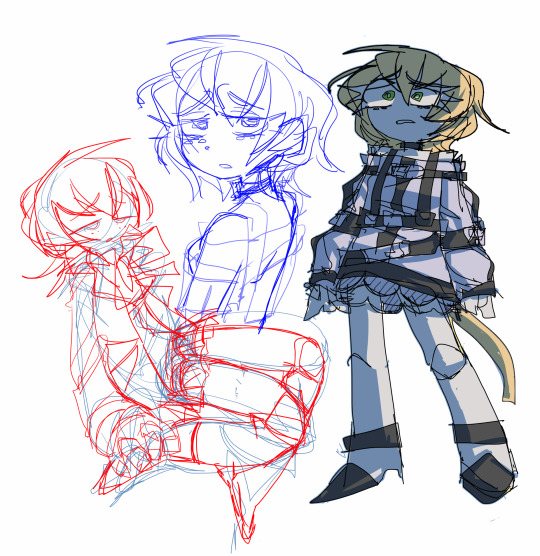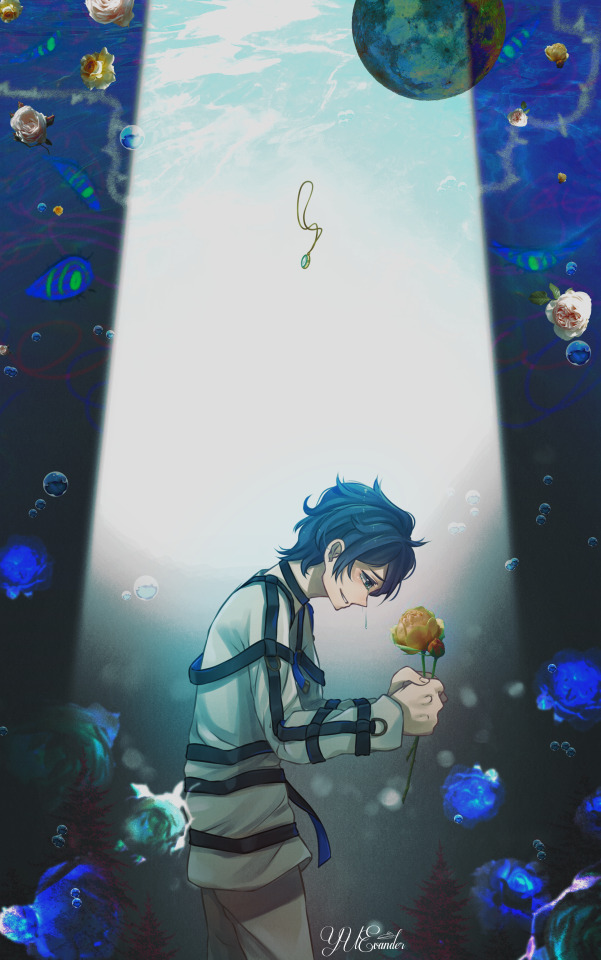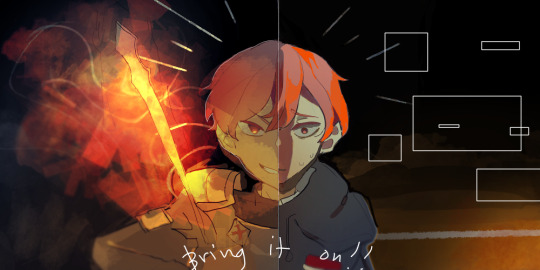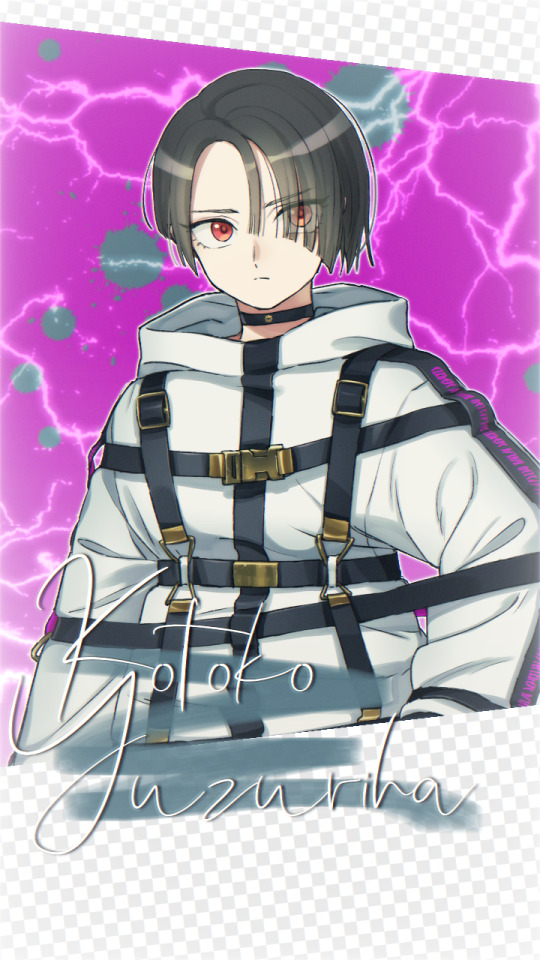Text
So, we need to talk about Mikoto.
I’m sure you’re all intelligent people who know better than to take your understanding of a complex, highly stigmatised mental health condition from a YouTube series, but as a person with DID, I still feel compelled to make a post talking about the realities of the condition.
Whenever DID is represented in media, it’s shown as something flashy and eccentric, as well as often being associated with murderers, or at least violence. This makes it difficult for those of us with DID to reach out for support; I know multiple people with DID who, upon telling their support network about their condition, were met with jokes (and sometimes serious comments) about whether they’re violent.
So, take this as DID 101. At the end of this post I will include my masterpost of DID resources, which I strongly recommend checking out if you have any interest in this condition (especially if you’re a fan of Mikoto and plan to make analyses of him). Deco*27 may have no interest in understanding the reality of DID, but you can do better.
Please note that I am overlooking a lot of nuance in this post because I want people to understand the pure basics of DID. The resources linked at the end go into far more detail, and given that many of them come from medical sources or professional advocates, are far more reliable than just some guy on tumblr.
So, what is DID?
DID stands for Dissociative Identity Disorder. It’s a condition that forms in response to repeated early childhood trauma, most often abuse from a caregiver, but other forms of interpersonal trauma can also cause it.
As children, our brains are hardwired to attach to our caregivers no matter what, because that’s how we stay alive. Our caregivers give us food and shelter, they give us protection from strangers, they give us affection and attention, all things that are necessary for healthy development. Because of this, even if a caregiver is abusive, a child is still wired to attach.
One way that a child can ‘cope’ with having an abusive caregiver is by denying the abuse. The brain dissociates (disconnects/denies/fails to integrate) from the abuse, seeing it as happening to ‘some other child’. This process is called splitting.
The part of the child that copes with daily life becomes amnesic of the abuse, or at the very least emotionally disconnects from and downplays it, while the part of the child that copes with the abuse develops their own sense of identity based around the experiences that they cope with.
Now that the brain has learnt splitting as a coping mechanism, it can continue to split for any experience that overwhelms the person’s ability to cope, creating more dissociative parts that may or may not develop their own senses of identity.
DID is a disorder that often forms in the face of violence, but this does not mean that the dissociative parts are violent, themselves. It is common for dissociative parts to hold repressed anger, or to be based on external abusers, but this does not make them violent or abusive themselves. It is common for those with DID to experience intense internal conflict and self-directed violence, but not to express other-directed violence, outside of situations where fight/flight is triggered.
What if someone with DID did commit a crime?
DID has been used as a defence in criminal cases before. However, within the DID community, there is an acknowledgement of the fact that every part is responsible for the behaviour of one part.
Despite the way that media may like to act, DID is not ‘multiple people living in one body’. It is one person with multiple, often radically different ways of perceiving themselves. One person with a fragmented sense of self. One person who experiences amnesia.
Due to this, if a part committed a crime, the entire person with DID would be responsible for it.
Something else to keep in mind about DID is this- because a person with DID is still one person, morals don’t radically differ between parts, unless there is a trauma-based reason for it. So, if one part is willing to commit murder, outside of any external pressures, that means every part is okay with it on some level.
What’s the harm of Milgram’s portrayal of DID?
Outside of what I mentioned in the introduction to this post, many people with DID are deeply afraid of their parts when they first discover that they have this condition. It’s a disorder based around denial of intolerable experiences. Fear and avoidance are central to how the disorder forms and maintains itself.
Many people with DID feel out of control when their parts ‘front’ (take control of the body), even moreso if they experience more intense amnesia and can’t remember what their parts do, or if their parts experience overwhelming anger/pain/fear that they struggle to understand.
Many people with DID struggle to understand their parts ways of thinking, belief systems and needs. This causes internal conflict that maintains dissociation. It is one of the major hurdles to recovery.
Media portraying people with DID as violent and murderous doesn’t help. Many people with DID do not realise that their parts will have the same morals/ethics that they have. Many people with DID are afraid of what their parts may do. The normalisation of DID as a disorder that causes violence makes this worse.
Many people with DID also experience shame of their condition. Shame is a very common emotion in survivors, and it causes many people to keep their trauma a secret, even from those who could support them. Many people will keep their condition to themselves due to not wanting to be seen as violent, and not wanting to have to educate people about the realities of their experiences.
Milgram has a huge issue of using mental illness as a shock-factor, both with Mikoto and Haruka. While this isn’t intended as a callout or to tell people to stop watching Milgram (I have every intention to continue watching, after all), I do want to encourage people to be critical and understand that the way mental health conditions, symptoms and behaviours are being associated with violence and ‘creepy’ imagery is not okay.
If you would like to learn more about DID, I have a document of resources here. The document is periodically updated, and includes resources about childhood trauma, attachment trauma, other disorders and coping skills, along with resources about DID specifically.
Thank you for reading.
29 notes
·
View notes
Text
so im not intending to do analyses of milgram anymore
there are some things in milgram that still interest me a lot. i’ve still been watching the videos as they come out and coming up with analyses, but after mikoto’s trial one video and haruka’s trial two video i’ve realised that deco*27′s understanding of mental illness is, frankly, appalling
i’m going to make a post about did shortly just to make sure that people are aware of the realities of the condition, but that’s probably going to be the only other original post i’m going to make on this account
it’s a shame, too, because milgram is such an interesting concept and i was really looking forwards to digging in to everything, but if any mental health-related analysis i make is going to be inaccurate on the basis of the creative team filling their story with stereotypes and ableism then... eh...
#txt#im still keeping up with it#and YunoDidNothingWrong#but as someone with complex mental health issues#including did#i just feel incredibly uncomfortable with some of the choices that have been made
8 notes
·
View notes
Photo

Mukuhara Kazui - HALF
Can’t wait for his MV argh
146 notes
·
View notes
Photo

ミルグラム公式ファンアート企画 アマネ
#MILGRAM #ミルグラム
#ミルグラム公式ファンアート企画
681 notes
·
View notes
Video
so they say sounds can be heard from mikoto’s cell at night…
282 notes
·
View notes





















